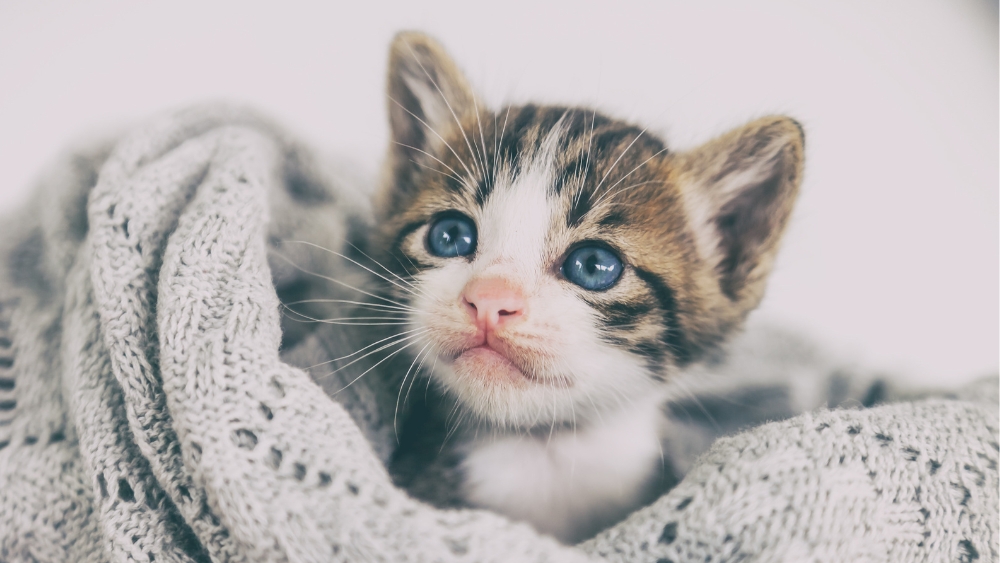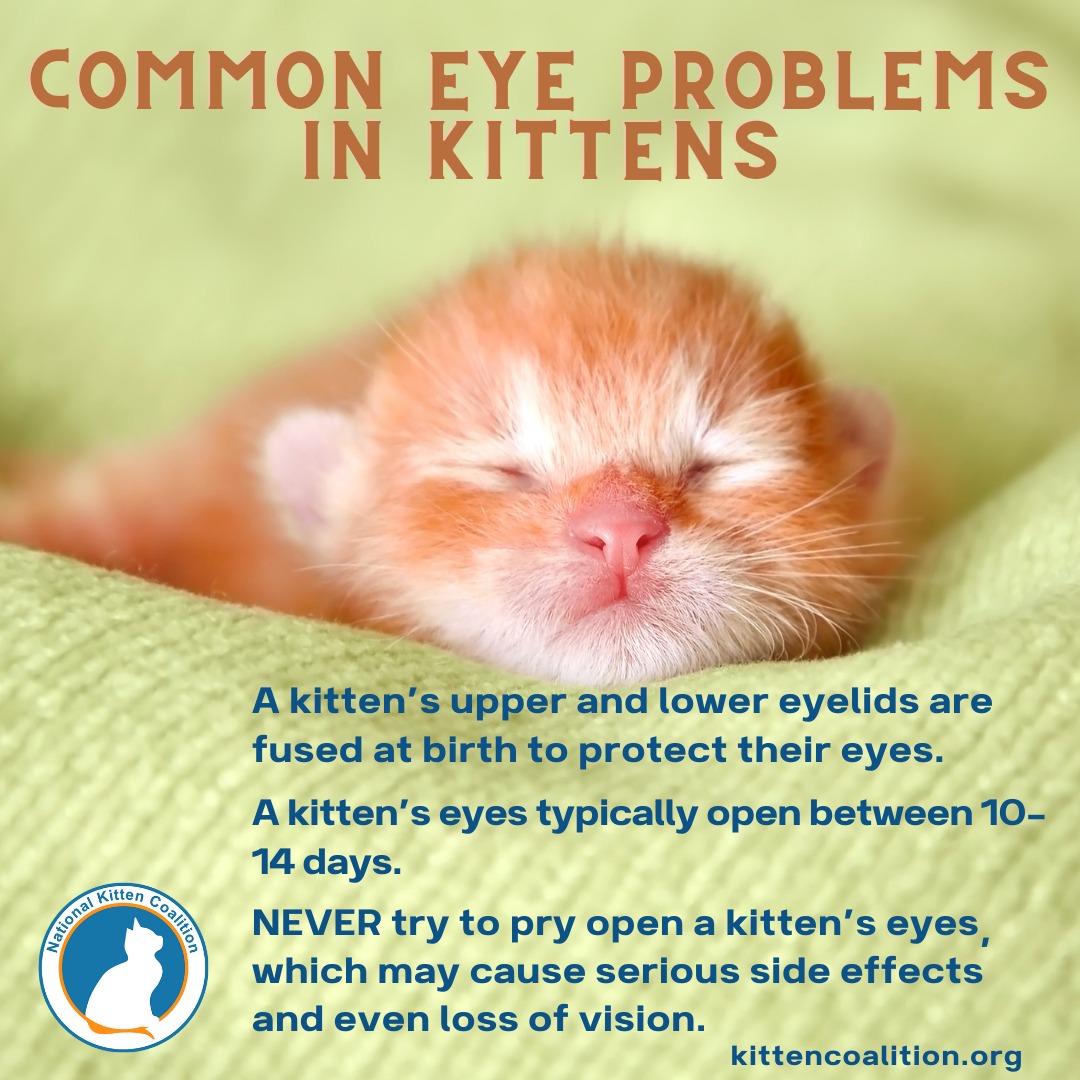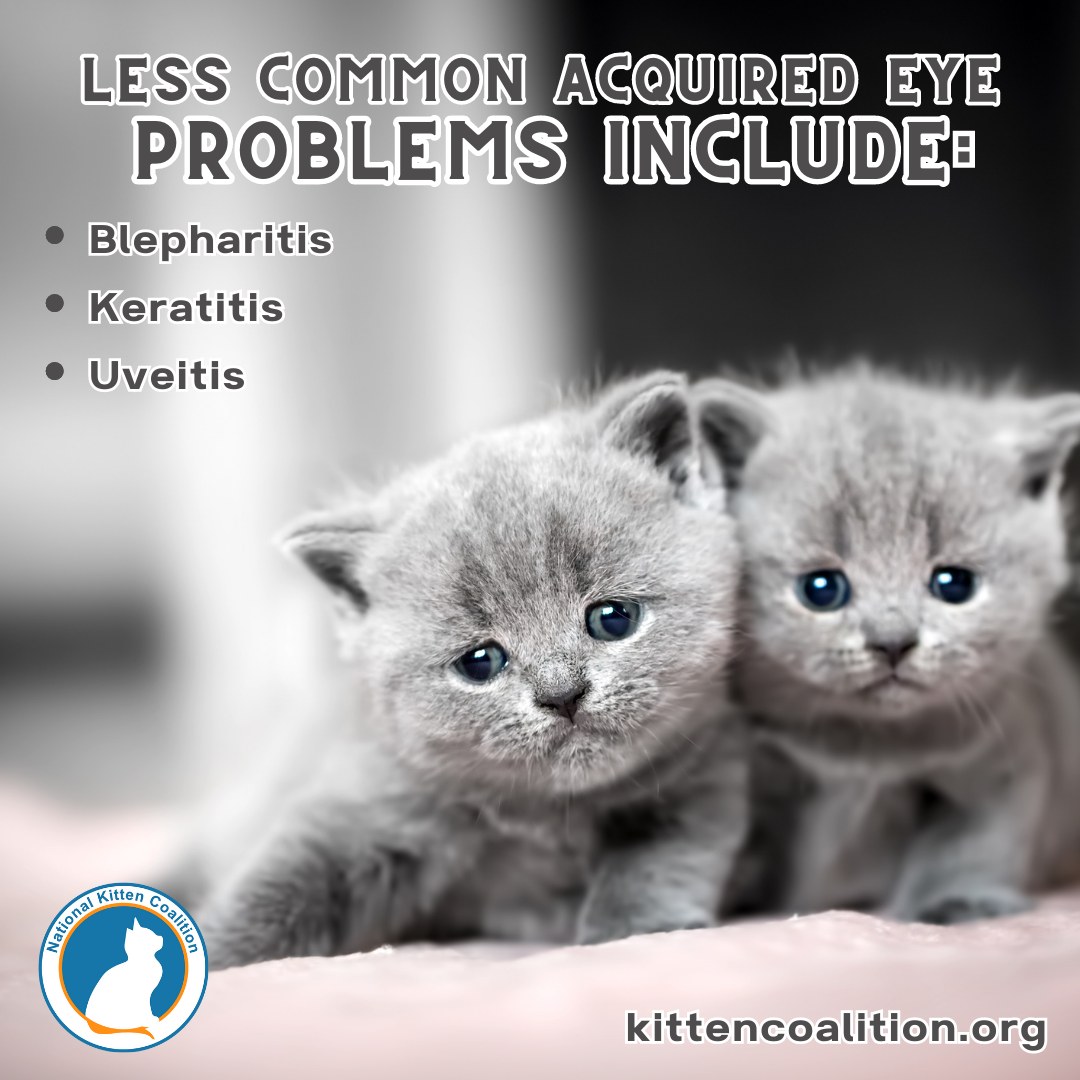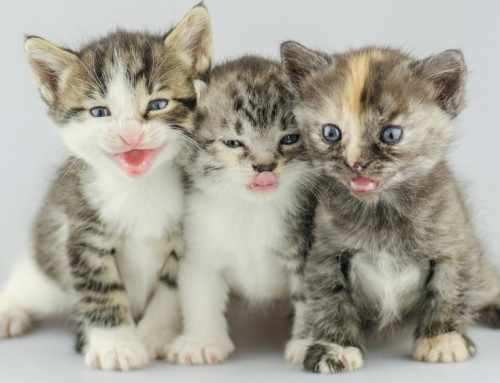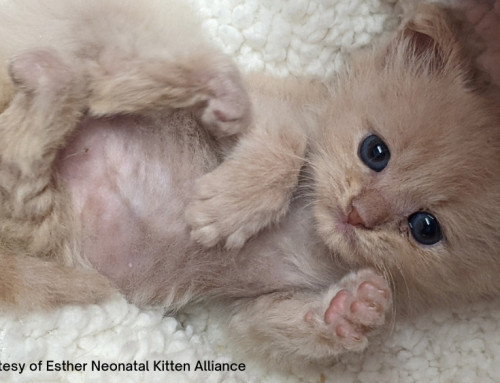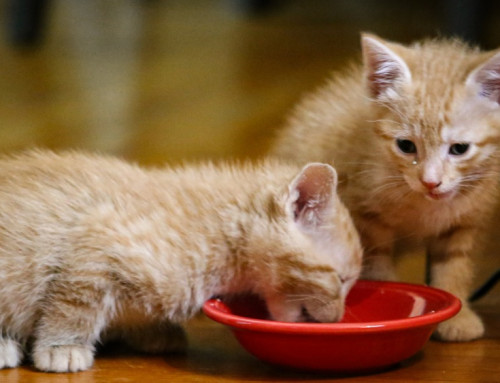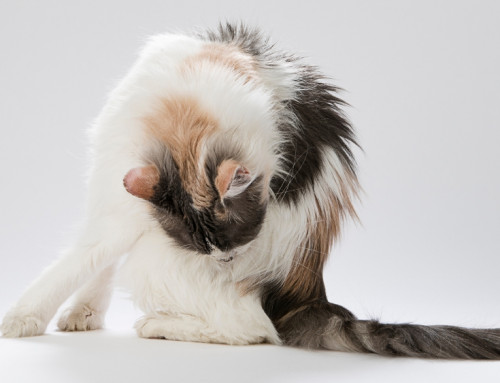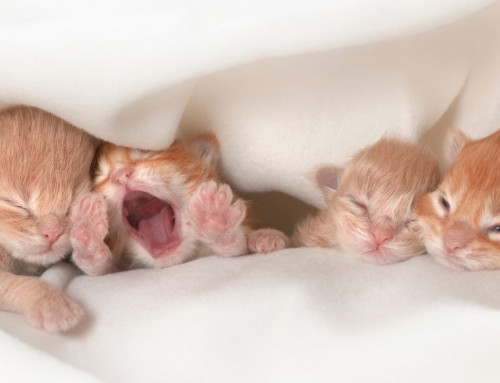Share this resource or email it to a friend!
Eye problems in kittens can be acquired through infection or injury in the first weeks and months of life or be congenital and caused by being born with an abnormality.
To properly function, eyes must be kept moist. Because it can take several weeks for tear production to begin, the kitten’s upper and lower eyelids are fused at birth to protect their eyes. A kitten’s eyes typically open between 10-14 days. NEVER try to pry open a kitten’s eyes as this can lead to serious side effects and even loss of vision.
Although many kittens may acquire mild eye infections or injuries living outside or being in an animal shelter, most kittens will not have significant eye disease. However, it’s important to contact the shelter, rescue or a veterinarian because even mild eye infections and injuries can quickly worsen. Severe infections and injuries during kittenhood commonly cause permanent eye damage and can lead to surgical removal of the eye, known as ocular enucleation.
Acquired Disorders of the Eye
Corneal Trauma
The cornea is the transparent layer forming the front of the eye. Kittens are prone to painful trauma of the cornea, including corneal laceration and corneal ulceration.
Corneal laceration is the most common trauma resulting from direct injury to the eye from a claw, bite or foreign object. Mild lacerations can be treated with topical eye medications, while more serious lacerations may require surgery or even enucleation.
Corneal ulceration is the erosion of the cornea resulting from the following:
- Blunt trauma
- Chemical burn, for example, from an irritating shampoo
- Viral infections
- Bacterial infections
- Entropion: inwards rolling of the eyelids allowing eyelashes to irritate the cornea
- Ectropion: outward rolling of the eyelids allowing foreign matter to irritate the cornea
- Extra or misplaced eyelashes emerging from the underside of either the upper or lower eyelids
Corneal trauma is a very painful condition and is considered a veterinary emergency. A kitten showing any signs of corneal trauma, such as squinting or pawing at their eye, should be evaluated by a veterinarian immediately.
Conjunctivitis and Secondary Eye Infections
Conjunctivitis is an inflammation of the conjunctiva, the thin mucous membrane that lines the inside of the eyelids and extends over the sclera, the white portion of the eye. The primary causes of conjunctivitis are feline herpesvirus type-1 (FHV-1), Feline Calicivirus, Chlamydophila felis and Mycoplasma. Viral infections are often complicated by secondary bacterial infections caused by streptococci and/or staphylococci species.
The most common symptoms of conjunctivitis include:
- Discharge of various colors and consistency from one or both eyes with or without crusting
- Redness of the tissues surrounding the eyes
- Abnormally elevated and easily observed third eyelids
- Excessive blinking or squinting, known as blepharospasm
Discharge will often initially be clear and then change to yellow or green once a secondary infection is present. If the infection spreads to inside the eye, then the eye can enlarge and be at risk for rupture. Sneezing and/or nasal discharge can also occur if an upper respiratory tract infection is present.
Kittens with conjunctivitis and/or eye infections should be seen by a veterinarian as soon as possible so that treatment can begin to prevent pain and complications. Although a veterinarian may recommend further testing to determine the cause of the conjunctivitis and/or eye infection, treatment typically includes antibiotic suspension or ointment in the eye and oral antibiotics or antiviral medications. Topical and oral anti-inflammatory medications may also be indicated in severe cases. During treatment for conjunctivitis and eye infections, supportive care includes daily moist compresses to clear crust and discharge from around the eyes.
Neonatal Ophthalmia
Neonatal ophthalmia (also known as ophthalmia neonatorum or neonatal conjunctivitis) is an eye infection that occurs behind the fused eyelids within the first weeks of life. Neonatal ophthalmia can be caused: by a delay in the opening of the eyelids, known as pathologic ankyloplepharon; infections, including Feline Chlamydophila (Chlamydophila felis) and feline herpesvirus type-1 (FHV-1); and bacterial infections with staphylococci or streptococci species that can be transmitted to the kittens from infected vaginal secretions at the time of delivery. Treatment requires a veterinarian to open the fused eyelids, flush the eyes and prescribe topical and oral medications.
Other less common acquired eye problems include:
- Blepharitis: eyelid inflammation
- Keratitis: corneal inflammation
- Uveitis: eye inflammation affecting the middle layer of tissue in the eye wall, which can be secondary to Feline Infectious Peritonitis
Congenital Disorders of the Eye
Congenital disorders are defined as structural or functional abnormalities that occur during fetal development. Congenital abnormalities of the eyes may be noted shortly after birth or may spontaneously appear within the first 6-8 weeks of life. If a queen is exposed to toxic compounds, suffers from a lack of nutrients and/or has a systemic infection or uterine inflammation during pregnancy, her kittens may develop congenital eye abnormalities. Certain pedigreed cats are also at an increased risk for congenital abnormalities of the eye.
A veterinarian needs to determine the best treatment for congenital abnormalities, which include:
- Microphthalmia/Microphthalmos: one or both eyes are abnormally small
- Retinal dysplasia: an abnormal development of the photoreceptor cells (rods and cones) of the retina, which leads to an early onset of blindness
- Eyelid coloboma: full-thickness defect of the eyelid margin
- Glaucoma: increased pressure within the eyeball, causing pain and gradual loss of vision
- Buphthalmos: an abnormal enlargement of the eyeball
- Cataracts: an opacity of the lens, resulting in blurred vision
- Absence of the iris or pupil
- Absence of the tear duct openings
When it comes to a kitten’s eyes, it’s best to seek veterinary advice as soon as possible for any of the symptoms noted above.

